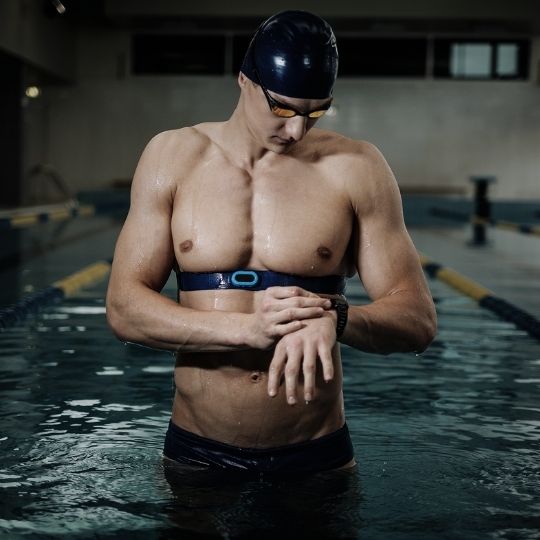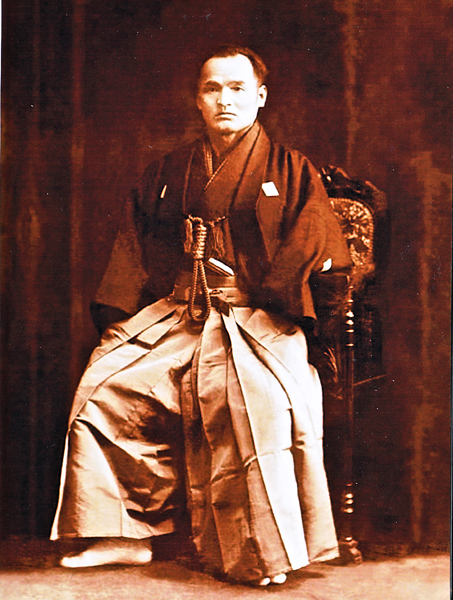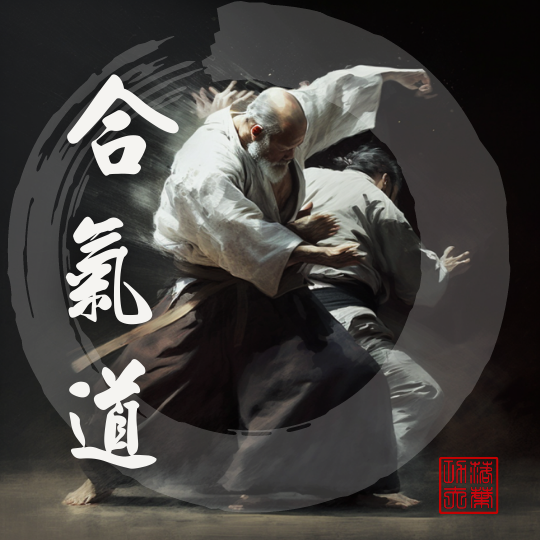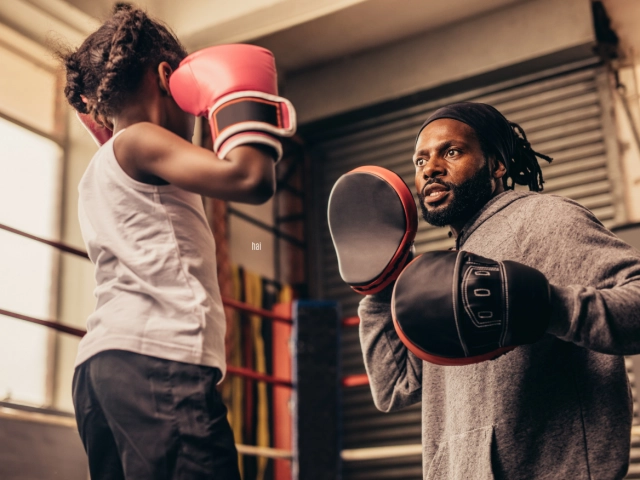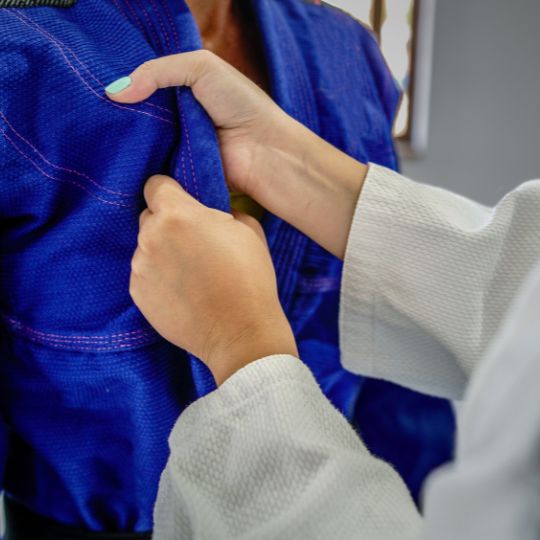
Improve Your Martial Arts Grip Strength With Jedd Johnson
Are you tired of losing your grip during intense martial arts sessions? Do you find yourself wondering, “How can I improve my martial arts grip strength?” Look no further! In this exclusive interview, I sit down with Jedd Johnson, a grip strength expert and top competitor in grip sport, to discuss the secrets of developing exceptional grip strength for martial artists.
With an impressive list of accomplishments under his belt and years of experience honing his craft, Jedd shares invaluable insights on different types of grip strength, effective training tools, and common mistakes to avoid. Stay tuned as we dive into the world of grip strength training and unlock the potential to elevate your martial arts game to the next level!

Jedd Johnson, Master of Grip Sport
Ashe Higgs: Jedd, can you give us a brief intro to your background and how you got into strength training and grip strength training specifically?
Jedd: My journey with lifting started when I played baseball and basketball in high school, but I was always inspired by movies like Rocky and pro wrestling. After an injury ended my baseball career, I got serious about strength training, exploring bodybuilding, powerlifting, and Olympic weightlifting. My strong point was overhead work, which led me to compete in strongman contests.
In 2003, I learned about a grip contest in Punxsutawney, Pennsylvania. I figured grip training would benefit strongman, so I signed up. Injuries eventually took me out of strongman, but I continued with grip training, and it’s been my main focus since 2006.
Ashe Higgs: Impressive! And you have quite a list of accomplishments in grip sport, right?
Jedd: Yeah, I’ve won the national championship in my weight class or overall several times. My first overall win was in 2014, and I’ve either won or taken second place every year since. I’ve also been in the top 10 list for grip sport over the last 20 years.
Grip Strength for Martial Artists
Ashe Higgs: Fantastic. Now, let’s talk about the application of grip strength in martial arts, which is the focus of our audience.
Jedd: Absolutely. I actually have a product called “Grip Training for MMA Athletes,” which demonstrates how grip strength can benefit martial artists. Developing full-body strength, including grip strength, can give you a significant advantage in martial arts.

thegripauthority.com
Key Takeaways
- Start with one day a week of intense lower arm training and gradually increase.
- Start with a full-body general warmup before moving on to grip training.
- Gradually work towards specificity, moving from full body to arms, and then grip training.
- Combine grip training with existing movements for time efficiency and effectiveness.
- Integrate grip training with multi-joint exercises for the upper body, like pull-ups with rolling handles or using fat grips on dumbbells for rows and curls.
- Utilize thick bar training and open hand exercises for general hand strength.
- Focus on low reps for building absolute grip strength (3-5 sets of 3-5 reps).
- Include exercises that promote blood flow in your hands for recovery, such as sledgehammer finger walks, rotation balls, sledgehammer rotations, extensor work with rubber bands, rice digs, or sand digs.
- Monitor your results closely to avoid overtraining and promote recovery.
Types of Grip Strength
Ashe Higgs
Alright, let’s dive a bit deeper into grip strength training. Many people might only think of crushing strength, like closing grippers. Could you give us a breakdown of the different types of grip strength and how they’re organized in competitions?
Jedd
Definitely. There are three main types of grip strength:
- Crushing.
- Pinching.
- Support grip.
Crushing involves grippers and other exercises that require a dynamic movement of the fingers. Pinching is a type of grip strength where the thumb is the limiting factor. Examples include the two-hand pinch and block weight lifting. The last main type is support grip, which is static and requires holding onto a bar or a thick handle without any finger movement. Thick bar lifting is also part of support grip and includes exercises like the inch dumbbell and axle lifts.
Tools and Training Methods for Grip Strength
Ashe Higgs
What are some common tools and training methods for grip strength? In traditional martial arts, they had various tools for training grip strength, like the jar grip. Can you talk about some modern tools that people use?
Jedd
Certainly. There are numerous modern grip training tools available, like hub lifting, which is grouped with pinching exercises. There are also many rolling handles on the market made of steel, iron, or plastic, each presenting different challenges. The Saxon bar is another popular pinch implement, similar to an axle or thick bar deadlift. Some other common implements include the IronMind Little Big Horn, which resembles a cone and is used for training to pick up anvils.

In grip sport competitions, we often see medleys, which are a series of challenges to be completed within a time limit, and vertical support exercises, which require gripping an object in a vertical position. All these different tools and exercises help athletes develop a well-rounded grip strength, essential for various applications, including martial arts.
Unconventional Tools and Fun Training Techniques
Ashe Higgs
So we’ve discussed different types of grip strength and various training tools. What are some unconventional tools for training grip strength, or some that are just fun to train with?
Jedd
One of the more uncommon and challenging tools is the Finnish ball. It’s a ball that sits on top of a plate and pins directly to a loading pin, requiring a key pinch grip. The key pinch can be very frustrating, especially for individuals with large hands, as they’re unable to cover the ball as well as someone with smaller hands. However, this evens the playing field for competitors with smaller hands. The hub is another implement where having large hands can be a disadvantage.

Ashe Higgs
The key grip is also essential in techniques like tearing decks of cards. I believe this type of grip involves more of the intrinsic muscles of the hand rather than finger or wrist flexors.
Jedd
That’s correct. Developing strength in the key grip can be beneficial in various applications, like gripping someone’s Gi or clothing material during martial arts. It’s essential to have strength in different ways.
Training Tips and Guidelines
Ashe Higgs
I’m looking for general guidelines on warmup and cooldown, volume, intensity, and training frequency, and how to avoid overtraining and keeping hands healthy. Can you give me some tips on these aspects?
Jedd
Certainly. For warmup, start with a full-body general warmup before moving on to grip training. Bodyweight squats, light barbell squats, goblet squats, push-ups, presses, and curls can help. Gradually work towards specificity, moving from full body to arms, and then grip training.
Regarding loading and volume, I recommend focusing on low reps for building absolute grip strength. Aim for 3-5 sets of 3-5 reps, or even lower if you want to peak your strength. Keep in mind that everyone is different, and factors like your job and daily hand use will affect your ability to handle the volume in grip training.
To avoid overtraining and promote recovery, monitor your results closely. If you’re not seeing progress, it could be due to technique flaws or doing too much without enough recovery. To aid recovery, focus on exercises that promote blood flow in your hands, such as sledgehammer finger walks, rotation balls, sledgehammer rotations, extensor work with rubber bands, rice digs, or sand digs. These exercises can help keep your hands healthy and improve recovery time.
Beginner’s Grip Strength Training for Martial Arts
Ashe Higgs
For beginners looking to improve grip strength for martial arts, what would you recommend in terms of training schedule, volume, and intensity?
Jedd
I work with a lot of wrestlers, and we focus on integrating grip training with multi-joint exercises for the upper body, like pull-ups with rolling handles or using fat grips on dumbbells for rows and curls. Starting with one day a week of intense lower arm training and gradually increasing from there is a good approach. Exercises like wrist curls, reverse wrist curls, and reverse curls with an easy curl bar can help introduce grip training stresses to beginners. Thick bar training and open hand exercises are also beneficial for general hand strength.
Ashe Higgs
What do you think is the lowest hanging fruit in training grip strength for martial arts?
Jedd
Integrating grip training with exercises that martial artists are already doing is a practical approach. Using thick bars, hanging globes, or cannonballs for pull-ups and other exercises helps develop grip strength without adding extra isolated exercises. The key is to combine grip training with existing movements, which can be both time-efficient and effective.
Common Mistakes in Grip Strength Training
Ashe Higgs
What are some of the most common mistakes that beginners make when they start grip strength training?
Jedd
One common mistake is trying to do too much too soon, which can lead to injuries in the forearm or elbow. It’s important to start with conditioning and gradually increase the intensity and volume of training. Another mistake is focusing too much on grippers. While grippers are a popular and convenient way to train grip strength, the strength developed from grippers doesn’t always correlate well or carry over to sports performance. It’s crucial not to rely solely on grippers for grip training and to incorporate a variety of exercises to improve overall grip strength.
Ashe Higgs
That makes sense. And you know, going back to what we were saying at the beginning, there are basically three different types of grip strength, and crushing strength displayed with grippers won’t necessarily transfer over to an activity like martial arts or wrestling, because you can’t completely wrap your fingers around your opponent the same way you would with grippers. So with that, why don’t you tell us a bit about your coaching programs and where people can find you?
Jedd Johnson’s Coaching Programs
Jedd
I have two coaching programs. The first one is a basic instructional website called thegripauthority.com. It has around 1,000 posts on grip training, including a few on martial arts training. Most of the content is focused on grip sport training, but the techniques covered can help iron out many factors that athletes need to contend with when trying to perform well on any given implement.
The second coaching program is more of a virtual coaching setup. I create a week-long program for clients based on their needs. About 50% of my clients are grip sport competitors, while the rest are looking to improve their grip strength for other reasons. I’ve worked with people training for the Marines and others who needed to meet specific physical requirements. I set up a week’s worth of work for them, and they complete the training and send it back to me. I update it every week, as it’s challenging to set up multiple weeks of training for those with less experience in grip training.
This coaching program is called the Grip Task Force. We start with a coaching call to identify the client’s goals, and then I send them a week’s worth of training. They send it back, I update it, and we do a follow-up call every two weeks for Q&A and video analysis. During their time in the Grip Task Force coaching program, they also get access to thegripauthority.com for additional resources and information.
You can find me and my coaching programs at thegripauthority.com and by searching for Grip Task Force online.
Conclusion
As we conclude our insightful discussion with Jedd Johnson, we are left with valuable knowledge and methods to improve our martial arts grip strength. We’ve delved into the various types of grip strength, explored both conventional and unconventional training tools, and learned how to avoid common pitfalls in our training. With Jedd’s expert guidance, martial artists from all disciplines can now take their grip strength to new heights and unlock untold potential in their practice. As you embark on your own path to grip mastery, remember the wisdom shared by Jedd and embrace the power of a strong grip to achieve unparalleled success in the world of martial arts.
I extend my heartfelt gratitude to Jedd for taking the time to share his expertise and insights with me. His dedication to the art of grip strength and passion for coaching others have made this interview truly enlightening. Jedd’s emphasis on technique as a crucial factor in grip strength development reminds us that, like martial arts, proper coaching can save years of trial and error in our quest for mastery.
To all our readers looking to improve their grip strength for martial arts or other pursuits, we highly recommend considering Jedd’s coaching programs, such as The Grip Authority and Grip Task Force. With his guidance, you can unlock the secrets of exceptional grip strength and hone the techniques that will elevate your performance to new heights. Don’t miss this opportunity to learn from a true expert in the field and enhance your martial arts journey with the power of a strong grip.
Support My Work
Show Some Love
If you found this article useful, you can support my blog by making a purchase from our Amazon Storefront and help me continue to provide valuable content.
If you’re ready to embark on your own journey of personal growth through martial arts, here are three ways I can help:
- Consider our small group or online martial arts classes to start your practice.
- Explore our other articles to deepen your understanding.
- Book a free discovery call to find out if one of our programs is right for you.
Read More!
- Why Hand-to-Hand Combat Still Matters in the Firearm Era
- What is a Kung Fu Master Called?
- Woman Fight’s Off Her Attacker At The Gym!
- Bruce Lee’s Real Fights: The True Stories Behind the Legend
About the Author

Ashe Higgs, I Liq Chuan Master Instructor & L2 Nutrition Coach
Ashe is a highly skilled martial arts instructor and certified nutrition coach with over two decades of experience in the field. He holds a Master Instructor certification in I Liq Chuan under Sam FS Chin, making him one of only several individuals worldwide to hold the title. He has taught classes and workshops worldwide and is passionate about helping others achieve their fitness and wellness goals.
With a background in full-contact fighting and a Level 2 certification from Precision Nutrition in nutrition coaching, Ashe is a well-rounded expert in the fields of martial arts. In addition to his expertise, he has a wealth of experience in teaching and mentoring others. He has a natural ability to connect with his students and inspire them to reach their full potential.
Disclaimers & Conflicts of Interest
I am not a doctor, and the information provided should not be considered medical advice. The information provided is for educational and informational purposes only and should not be used as a substitute for professional medical advice, diagnosis, or treatment. Consult your doctor or a qualified healthcare professional before making any changes to your diet, exercise routine, or lifestyle.
Please note that some of the links provided in this content may be affiliate links, meaning that I may receive a small commission if you purchase through them. However, please rest assured that any products or services recommended are based on my personal experience and belief in their value. I only recommend products or services that I have personally used and believe in.
























